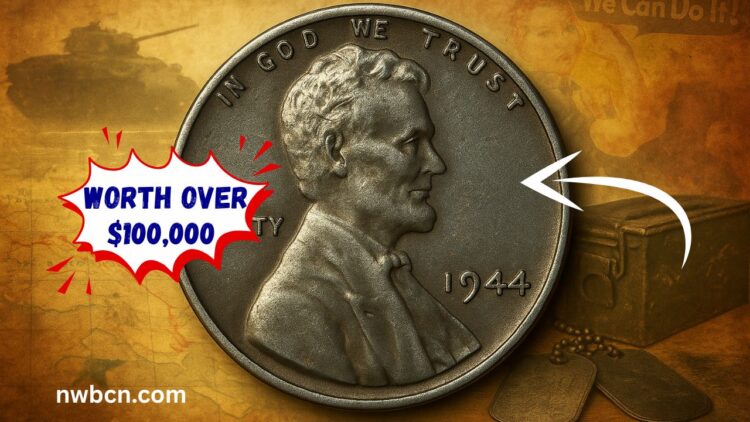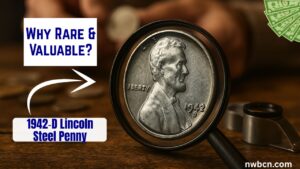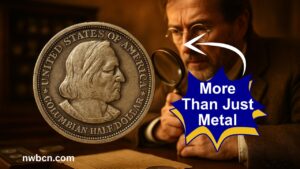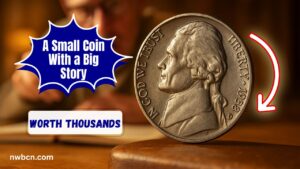Amidst the chaos of World War II, the U.S. Mint switched the 1943 Lincoln cent from copper alloy to zinc-coated steel to conserve wartime metals.
But in 1944, the Mint had returned to copper‑zinc pennies—yet a few steel blanks remained in the machinery. The result? A handful of 1944 steel wheat pennies—off-metal anomalies that “shouldn’t exist,” now worth well over $100,000.
Wartime Metal Switch and Mint Confusion
- 1943 metal change: Copper was reserved for shells; pennies became zinc-coated steel (“steelies”). Over 1.09 billion were struck in Philadelphia, Denver, and San Francisco.
- Return to copper in 1944: By January 1944, the Mint resumed the original copper‑zinc alloy, using salvaged brass shell casings.
- Error genesis: Some steel planchets from 1943 were left behind or mixed with new blanks; a few were struck in 1944 under the new dies.
These unintended steel cents, up to 25–30 known examples, hold a quirky intersection of industrial oversight and numismatic intrigue.
Rarity & Population Estimates
| Feature | Details |
|---|---|
| Known examples | ~25–30 “official” steel pennies struck in 1944 |
| Comparison to 1943 errors | Far fewer than 1943 Copper or Bronze-steel hybrids |
| Distribution of finds | Discovered across U.S., notable in Simpson collection |
| PCGS grading practice | Certified under Mint Error category |
With typical errors like doubled dies often appearing in thousands, the 1944 steel error’s sub‑30 count makes it one of the rarest modern cent anomalies.
Recent Auction Records & Market Value
- Over $100,000 each?
Recent sales confirm the extraordinary market value. Conservative estimates for error pieces in EF (Extremely Fine) grade start at $75,000, rising to over $200,000 in high-end sales. - Significant sales:
- A 2008 San Francisco specimen sold for $373,750.
- A similarly rare steel cent in 2021 was appraised at $30,000 on Pawn Stars (likely a lower-grade variant).
- Collector summit: One model sold for a staggering $475,000 in 2021.
These numbers place the 1944 steel cent error among the most valuable 20th‑century off-metal coins.
1944 Steel Wheat Penny Error—Value by Grade
| Grade | Estimate Value |
|---|---|
| EF–AU (Extremely Fine–About Uncirculated) | $75,000–$200,000+ |
| MS60–MS63 (Mint State) | $200,000–$475,000+ |
| MS63+ (Premium Quality) | Upwards of $475,000+ |
High-grade examples demand unprecedented premiums, dwarfing values of typical error cents.
Recognition & Authentication
Expert Certification
- PCGS and NGC grade these under “Mint Error Coins.” Steel of 1944 is identified using magnet tests, weights (≈2.70 g vs. 3.11 g for copper), and visual steel tonality.
- Counterfeits are common—lightweight copper pennies are often coated steel, requiring diagnostic tools for authentication.
Identification Tips
- Magnet test: Attracts steel pennies; copper coins resist.
- Weight check: Steel cents weigh about 2.70 g, 13% lighter than copper.
- Consistent appearance: Must match authentic steel penny appearance—zinc‑gray color with wheat reverse.
- Certification: Authentication by PCGS/NGC is essential for serious value.
Why Collectors Treasure This Penny
- Historic anomaly: From one of the few mistaken metal strikes of WWII’s penny history.
- Scarcity drive: With fewer than 30 known, it’s rarer than most 19th‑century error coins.
- Record breaking: Recent high sales cement its elite status in modern numismatics.
- Collector prestige: Possessing a 1944 steel penny means owning a wartime rarity of unparalleled scarcity.
The 1944 steel wheat penny exists because of wartime urgency—and human error. What should have never been minted turned into a priceless numismatic treasure, fetching $100,000 to over $475,000 in recent sales. Today, just a few dozen live this mistake story in collections, and high-end examples are among the most prized coins of the 20th century.
FAQs
Q1: How many 1944 steel wheat pennies are known?
Approximately 25–30 examples have been authenticated.
Q2: What drives their high value?
Their extreme rarity, wartime history, and large auction prices—one sold for $475K.
Q3: How can I tell if I found a real one?
Use a magnet test, weigh it, and compare visuals. Always authenticate via PCGS or NGC to confirm.




